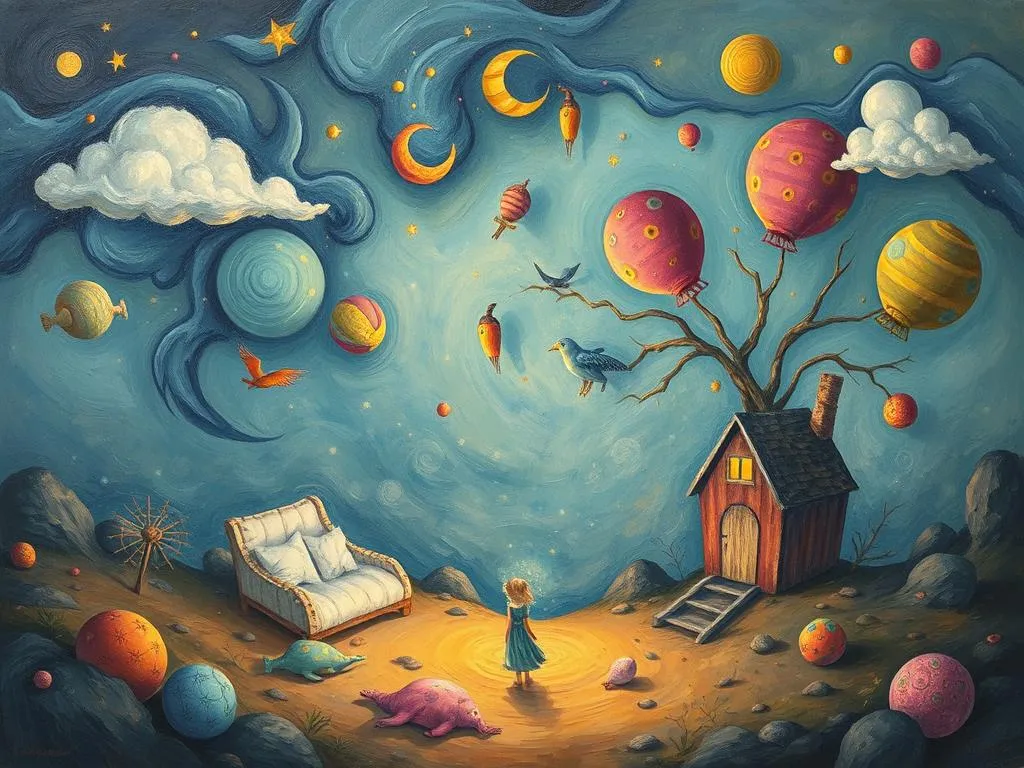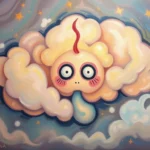
Dreams have long captivated human curiosity, serving as portals into our subconscious minds. Among the myriad of dreams we experience, bad dreams—often referred to as nightmares—are particularly intriguing. These unsettling experiences can leave us feeling anxious, confused, or even frightened upon waking. Yet, within the chaos of these dreams lies a wealth of hidden meanings waiting to be unraveled. Understanding the significance of bad dreams not only sheds light on our inner struggles but also provides valuable insights into our waking lives.
Symbolism and Meaning
At the core of bad dreams is a rich tapestry of symbols, each contributing to an overarching narrative. Common motifs include being chased, falling, losing control, or encountering terrifying creatures. Each symbol can carry multiple meanings depending on personal context and emotional state.
For instance, being chased in a dream often signifies a sense of avoidance in waking life. The pursuer can represent a problem or fear that you are not confronting, suggesting that the dreamer is running away from something important. On the other hand, some psychologists propose that the chaser may embody a part of oneself that the dreamer does not wish to acknowledge, such as guilt or anxiety.
Falling, another prevalent theme in bad dreams, typically symbolizes feelings of insecurity or a lack of control. It could represent a fear of failure or a significant life change that feels overwhelming. When we fall in a dream, the sensation can be jarring, often awakening us abruptly. This reflects our waking fears of losing stability, whether in relationships, careers, or personal goals.
Creatures or monsters often appear in nightmares, representing our deepest fears and anxieties. These figures can be manifestations of unresolved conflicts or traumatic experiences. The nature of the creature—be it a threatening figure or a more abstract, amorphous being—can indicate the intensity of the fear. For example, a monstrous presence may symbolize an overwhelming situation in life that feels insurmountable.
Additionally, the setting of a bad dream can be quite telling. Dark, confined spaces may evoke feelings of isolation, while chaotic environments could indicate a sense of being overwhelmed by external circumstances. Each location in a dream can serve as a backdrop to the emotional turmoil the dreamer is experiencing in reality.
Ultimately, the interpretation of symbols in bad dreams can vary significantly based on individual experiences and emotions. A deep understanding of these symbols can reveal insights into personal fears and unresolved issues, encouraging self-reflection and growth.
Key Scenarios and Variations
Bad dreams can manifest in countless scenarios, each adding layers of meaning to the experience. One common variation is the test or examination dream, where the dreamer finds themselves unprepared for an important test. This scenario often reflects feelings of inadequacy or anxiety about performance, whether in academics, work, or personal relationships. The pressure of being judged can amplify the dream’s intensity, leading to feelings of panic and helplessness.
Another prevalent scenario is the dream of being lost or trapped. This feeling of disorientation can signify a lack of direction in life or the fear of making the wrong choices. The dreamer may feel as though they are navigating an unfamiliar landscape, mirroring real-life feelings of uncertainty or confusion. Such dreams can serve as a wake-up call, prompting the individual to evaluate their life path and confront any fears holding them back.
Dreams of being abandoned or left behind can also be particularly distressing. These scenarios often resonate with feelings of loneliness or fear of rejection. They may reflect past experiences of loss or relationship issues that are unresolved. The emotional intensity of such dreams can serve as a reminder to the dreamer to nurture their connections and address any underlying feelings of neglect or isolation.
Variations can also arise based on the emotional state of the dreamer. For instance, a dream featuring an attack may vary in interpretation depending on whether the dreamer feels empowered or powerless during the encounter. If the dreamer fights back, it may suggest a burgeoning sense of agency in their waking life. Conversely, if they retreat in fear, it may indicate a struggle to confront challenges head-on.
Exploring these scenarios can help individuals recognize patterns in their dreams, revealing underlying emotions and experiences that may need attention. By understanding how different contexts alter the narrative, dreamers can gain deeper insights into their psyche and emotional landscape.
Real-Life Connections and Takeaways
Connecting bad dreams to real-life situations can be a powerful tool for self-reflection and personal growth. The emotions and themes that surface in these dreams often mirror our waking lives, providing valuable insights into our mental and emotional states.
For instance, if you frequently experience dreams of failure or inadequacy, it may be beneficial to examine areas in your life where you feel unfulfilled or pressured. Are there specific circumstances or relationships that evoke these feelings? Recognizing these triggers can empower you to address them constructively, whether through open communication, setting realistic goals, or seeking support.
Additionally, bad dreams can serve as a prompt for self-care. If recurring themes point to anxiety or stress, it may signal the need to prioritize mental health and well-being. Implementing relaxation techniques, such as mindfulness meditation or journaling, can help manage anxiety and create a more peaceful sleep environment. Understanding that your subconscious is trying to communicate important messages can facilitate a deeper connection with your inner self.
Engaging in dream journaling can also enhance your understanding of bad dreams. Recording your dreams immediately upon waking allows you to capture vivid details that may fade over time. Over weeks or months, patterns may emerge, revealing insights that could aid in personal growth. This practice not only deepens self-awareness but also fosters a sense of agency in interpreting your own experiences.
Furthermore, reflecting on the emotions experienced during bad dreams can lead to significant revelations. Ask yourself: What feelings did I experience upon waking? Were there specific thoughts or situations that triggered these emotions in my waking life? This practice of introspection can cultivate emotional intelligence, enabling you to navigate life’s challenges with greater resilience and awareness.
Lastly, sharing your dreams with trusted friends or a therapist can provide additional perspectives. Discussing the symbols and feelings associated with your bad dreams can illuminate aspects you may not have considered, helping to demystify the experience. Sometimes, simply vocalizing fears can diminish their power and foster a sense of relief.
In conclusion, while bad dreams can be distressing, they hold the potential for profound self-discovery and healing. By unraveling the layers of symbolism and meaning, exploring variations, and connecting these experiences to real life, individuals can transform nightmares into tools for growth. Embracing the complexity of these dreams encourages a deeper understanding of oneself, fostering resilience and emotional well-being. Remember, the next time you wake from a bad dream, take a moment to reflect. Your subconscious may be trying to guide you toward greater clarity and fulfillment in your waking life.







